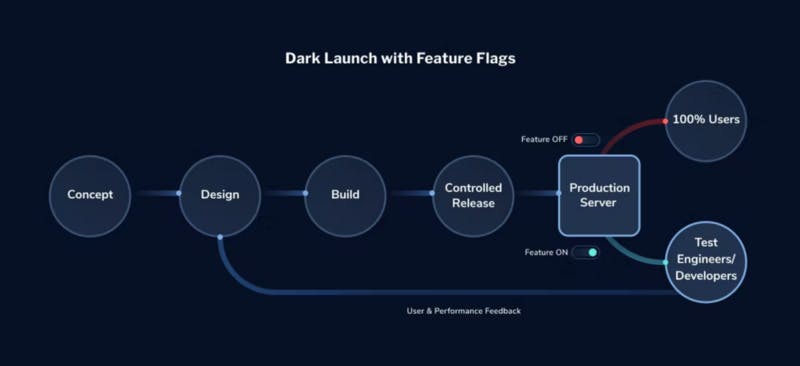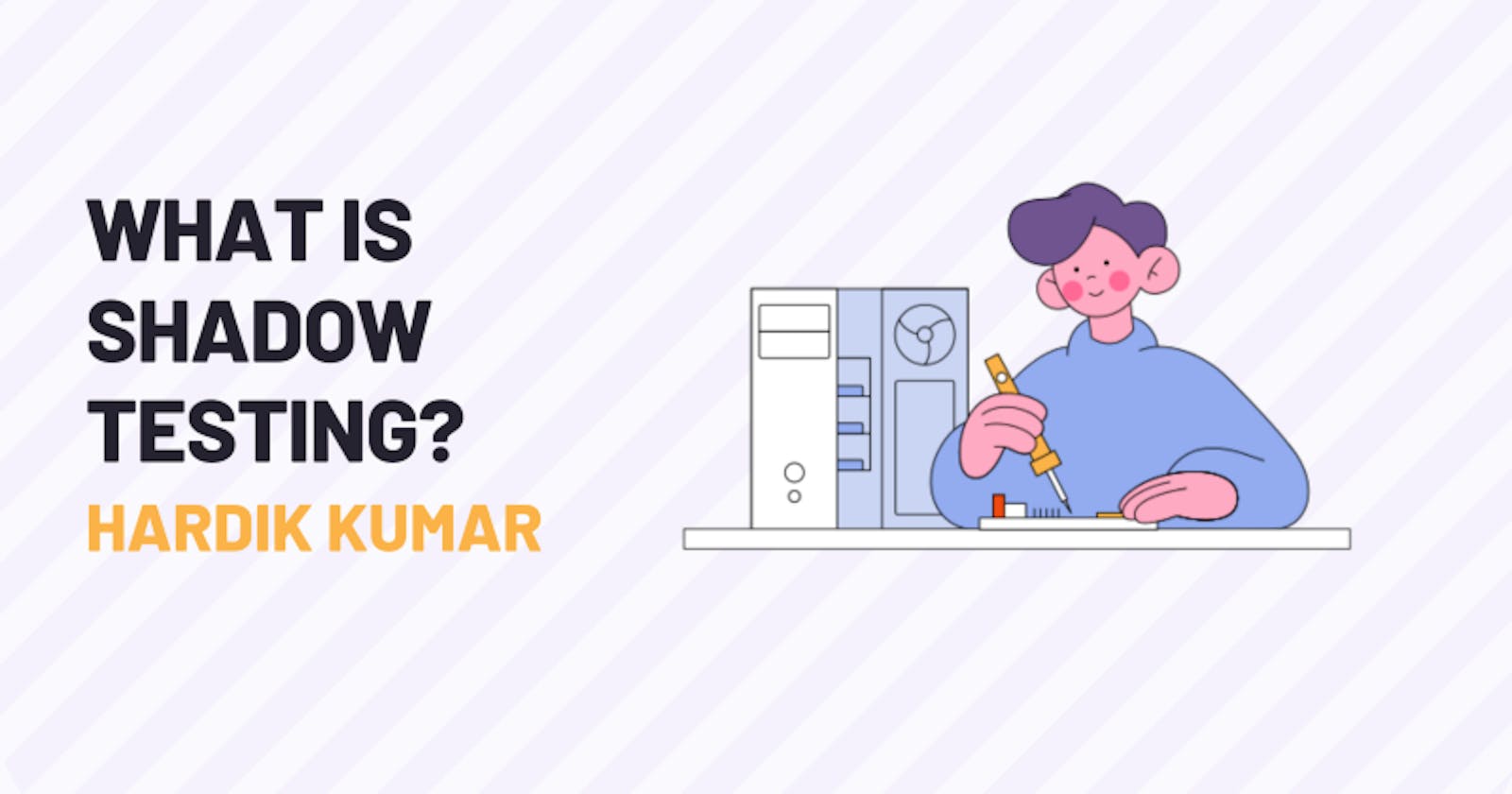The term "Shadow Testing" has become necessary for tech companies nowadays as they have to keep their customers their priority. Rather than testing new features directly on all customers and then making adjustments based on their feedback, companies choose to first test these features on a small group of users.
What is Shadow Testing?
This approach allows them to gather feedback and make necessary adjustments before rolling out the features to a larger audience. This way, they can assess and evaluate the feature's performance and gather feedback before releasing it to a larger audience.
Shadow Testing, also referred to as Dark Launching, is a technique that enables us to test our fully developed software with a small set of users. This testing occurs while the rest of the users continue to use the existing product without the new feature being tested.

Shadow testing is used to monitor the differences between the current environment and the new environment with a new feature. This is done to reduce any risks before its actual release to the users.
By sampling real traffic from our production environment, without making any changes to our code or affecting the user experience, we gain valuable insights into the behavior of our actual users. This helps us to make informed decisions about the design, development, and optimization of our products.

How Does Shadow Testing Work?
Create a Shadow Environment: Set up a duplicate of your production environment where the new feature will be deployed for testing.
Mirror Production Traffic: Route a copy of the real-world user traffic to the shadow environment. This ensures the new feature is tested under realistic conditions.
Compare Responses: Measure and compare the responses from the shadow environment (V-Next) with the production environment (V-Current). Any discrepancies highlight potential issues with the new feature.
How does Shadow Testing help in production launch?
Shadow Testing involves creating a replica of the production environment, known as the "shadow environment," to simulate real user traffic. This allows us to test a new feature in a separate environment called the "next environment" (V-Next).
After conducting testing, we compare the responses obtained from both the testing environment and the production environment (V-Current). This step is taken to reduce any potential risks before deploying the new feature to the production environment. In simpler terms, it is a technique that ensures whether the new feature functions correctly before it is officially launched.
By comparing the responses, we verify that the new feature works as intended and does not introduce any negative impact on the existing system. This practice decreases the chances of facing issues when the feature is deployed to the production environment, providing a smoother and safer transition for the new functionality.
Pros and Cons of Shadow Testing
Pros of Shadow Testing:
Minimized Risk to Production:
- Shadow testing allows you to run tests in a production-like environment without impacting real users. This minimizes the risk of failures or disruptions in the live system.
Accurate Real-world Simulation:
- It simulates real-world traffic and interactions, providing insights into how new features or changes will behave under actual usage conditions.
Cons of Shadow Testing:
Complex Setup and Maintenance:
- Setting up shadow testing environments can be complex, requiring additional resources, infrastructure, and effort to ensure that the shadow system mirrors production closely.
Requires Extra Resources:
- Running parallel systems can increase resource consumption and infrastructure costs, including hardware and networking.
How does Keploy help with Shadow Testing?
Let's understand this with an example of API testing… There are some tools to implement Shadow Testing like Keploy, Diffy, etc. These tools' primary purpose is to compare V-Current and V-Next responses and then find the differences.
Imagine you own Amazon, and you have an API (a way to access certain information) that fetches product reviews. You recently added a new feature that displays verified or popular users' reviews at the top. After testing the feature, you need to ensure that your APIs are also functioning correctly.
This is where Keploy comes into the picture. It helps test the expected behavior of all the APIs.
Keploy already knows how the APIs should behave based on previous testing. This time, it automatically tests the APIs and compares the differences in their responses. By doing so, it checks if the APIs are still producing the expected output.
In summary, when you add a new feature to Amazon and want to ensure that the APIs associated with it are working as expected, Keploy comes in handy. It tests the APIs and compares their responses to verify that they are still behaving correctly.
Conclusion
Shadow testing is a technique that tests new features in a live production environment without affecting users by routing a portion of traffic to the new feature. It compares the new feature's performance to the existing system, helping identify potential issues and guiding decisions on whether to fully deploy the feature.
FAQ’s
1. What is Shadow Testing?
Shadow testing, also known as dark launching, is a technique where new features or changes are tested in a production-like environment with a small group of users, while the rest of the users continue using the existing system. This approach allows companies to evaluate performance and gather feedback before rolling out the feature to a larger audience.
2. How does Shadow Testing work?
In shadow testing, a replica of the production environment is created, known as the "shadow environment." A portion of real-world user traffic is routed to this environment to test new features. The responses from the shadow environment (V-Next) are compared with the production environment (V-Current) to identify discrepancies and potential issues before full deployment.
3. Why should I use Shadow Testing?
Shadow testing helps reduce the risk of introducing bugs or disruptions into a live environment. It allows companies to test new features under real-world conditions, making data-driven decisions on whether the feature is ready for full deployment.

